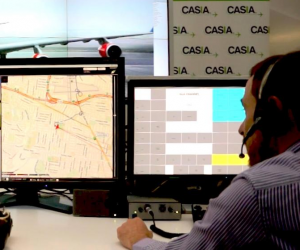Drones are the fastest growing sector of the aviation industry, with worldwide sales expected to top $US6 billion in 2015. However, numerous concerns have been raised regarding their safe incorporation in civil air space.

Researchers from the Royal Melbourne Institute of Technology (RMIT) have developed a talking drone that can communicate with air traffic controllers just like a normal pilot.
Now, a drone can respond to information requests and act on clearances issued by an air traffic controller, using ATVoice, UFA’s voice recognition and response technology.
The revolutionary system was developed by RMIT in collaboration with Thales Australia and the company’s Centre for Advanced Studies in Air Traffic Management (CASIA) and UFA Inc.
The technology is a key step towards a full integration of unmanned aircraft systems – or drones – into civil airspace, the researchers claim.
“The majority of air traffic control services are provided to aircraft by voice radio – aircraft controllers speaking directly to pilots. Our project aimed to develop and demonstrate an autonomous capability that would allow a drone to verbally interact with air traffic controllers. Using the system we’ve developed, an air traffic controller can talk to, and receive responses from, a drone just like they would with any other aircraft,” said Dr Reece Clothier, leader of the RMIT Unmanned Aircraft Systems (UAS) Research Team.
The project is part of a larger research initiative that is focused on boosting drone safety and efficiently, as well as overall improvement of air traffic management.
The new system was presented in a paper at the Australian International Aerospace Congress held in Melbourne this week.
“This is a significant project that is important for the future of air traffic control systems. It brings the safe and seamless operation of Unmanned Aerial Vehicles within civil airspace one step closer, and is an excellent example of close collaboration between different teams,” said Philippe Bernard-Flattot, Technical Director at Thales Australia.
According to the official press release, flight-testing of a prototype system was completed late last year, demonstrating integration to Thales’ Top Sky Air Traffic Control System.
Further studies are currently being conducted in order to better understand the benefits, and explore the human factor issues associated with the automation of drone to air traffic controller communications.




















